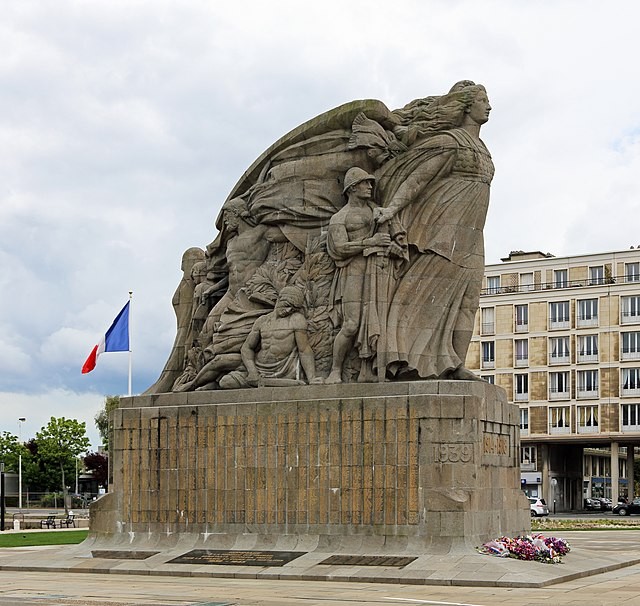The memorial was sculpted by Pierre-Marie Poisson in 1922; it was made in 1924. The stone base rises from ground level, where the memorial forms into numerous sculptures of soldiers, men, women, and children.
Around the base of the memorial are the names of those who died during the First World War that came from the city of Le Havre.
In 1940, war returned to France and the German occupation that followed. Over the coming year, the Western allies targeted the port facilities of Le Havre ,causing significant damage to the area.
The memorial remained undamaged, unlike nearly all the buildings that surrounded it in the port area. In September 1944, British forces under the command of the Canadians liberated the city. In the coming years, the memorial was then developed with the inclusion of those from the city who were killed during the Second World War.
The memorial is 10 metres high and 5 metres in width. It is considered one of the most imposing memorials in all of France.
